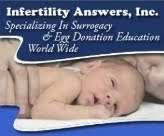
I wanted to share this with you today because I feel that we often forget that we have "personal power"! We move through our daily life being pushed and persuaded in what we "should" think or what we "shouldn't" question or we may just be wandering aimlessly until "things resolve themselves".
Below is a great little article that may put it all back into your own hands and offer you some guidance in bringing back your own personal power. Take that control and know that you are in charge of your life, your hopes and your dreams. You have the Power inside you!
Sharon LaMothe
Below is a great little article that may put it all back into your own hands and offer you some guidance in bringing back your own personal power. Take that control and know that you are in charge of your life, your hopes and your dreams. You have the Power inside you!
Sharon LaMothe
LaMothe Services, LLC
Personal Power:Living From the Inside Out
by Laura Belsten, PhD, MCC
Lao Tzu, famous Chinese philosopher living over 2500 years ago, stated that the biggest problem in the world is that individuals experience themselves as powerless. Powerless individuals feel helpless, negative, lethargic, frustrated, resentful, and often live in fear, enslaved by circumstances they perceive as beyond their control.
The opposite of powerless is an inner awareness, an internal state of being we refer to as “personal power” in the emotional intelligence field.
Personal power is an inner awareness that makes us feel in control of our lives. It is an inner knowing that we can achieve our goals, a calm conviction about who we are and our ability to get the things we want in life.
Quiet Confidence
People with a highly developed sense of personal power have a quiet self-confidence that they can set the direction of their lives, and they do. They are able to distinguish among circumstances over which they have some control and those they do not. They define themselves from the inside out (for example, their internal self talk includes messages like “I am a capable person, I can manage this setback, I’m good at managing conflict, I’m creative”)
The biggest barrier to success in almost any endeavor is powerlessness, negativity, helplessness and inertia. Mahatma Gandhi had no army, never held or accepted political office, never used violence. He was a small, frail man, yet he defeated the armed might of the British Empire, driving the British out of India without firing a single shot. How did he accomplish this?
Personal power. Personal power can move mountains. Personal power solves problems.
Dr. Laura Belsten is Dean of the Graduate School of Coaching, Master Certified Coach (MCC), and a national leader in the field of Emotional Intelligence. Personal Power is one of the twenty-four key competencies of the Emotional Intelligence Profile. Learn them all!














